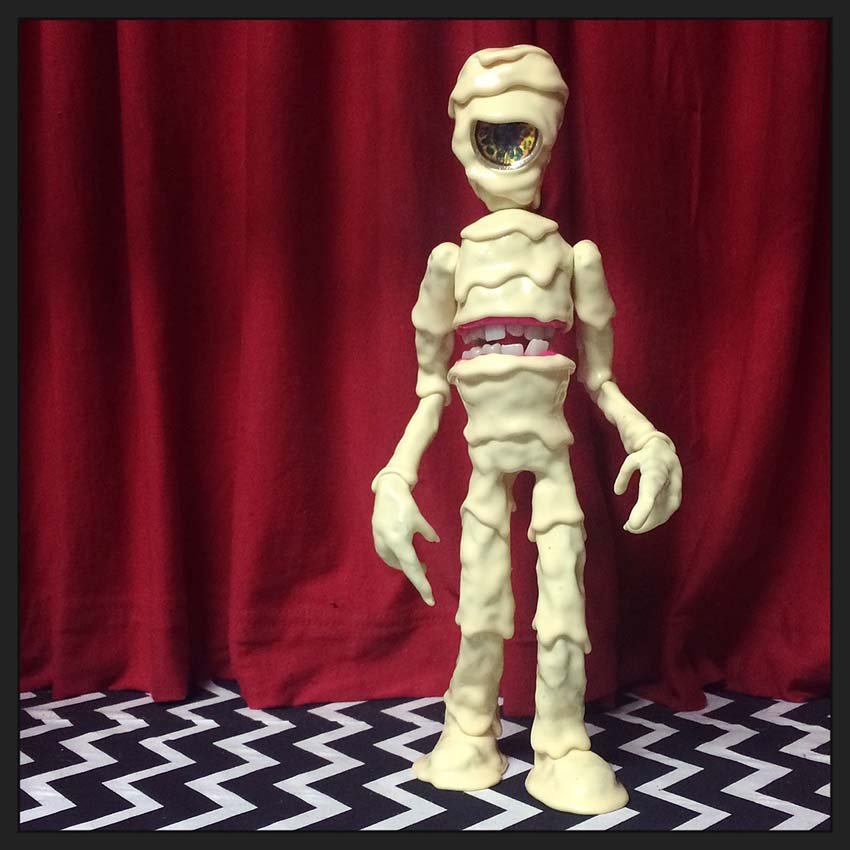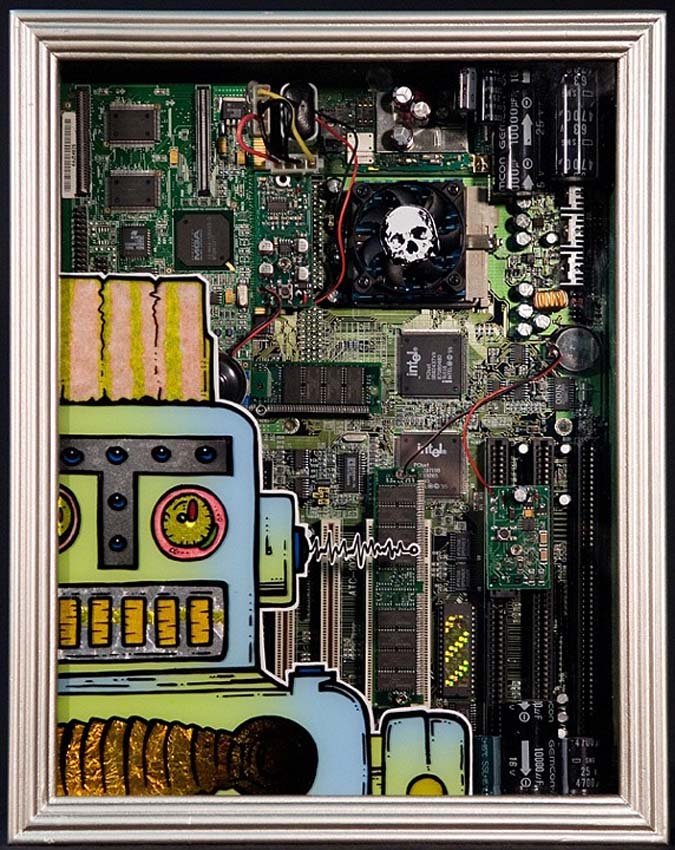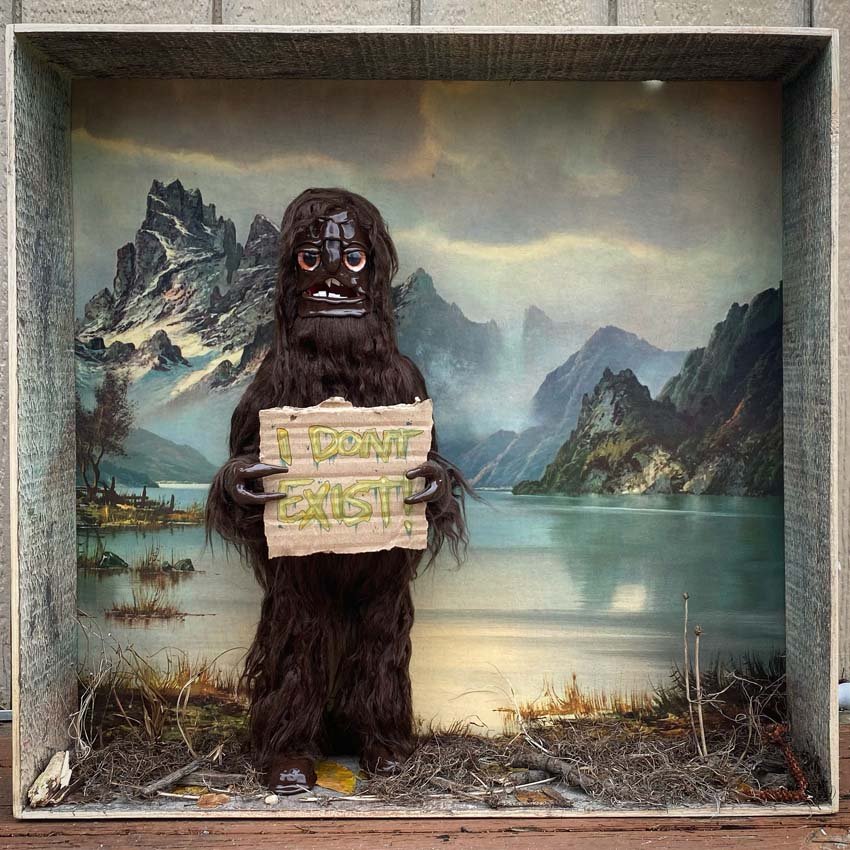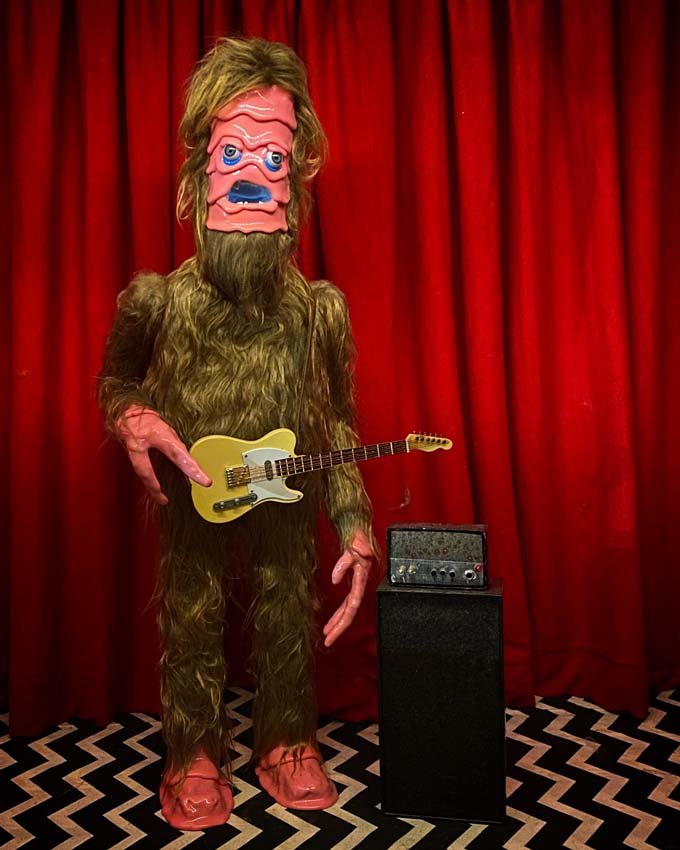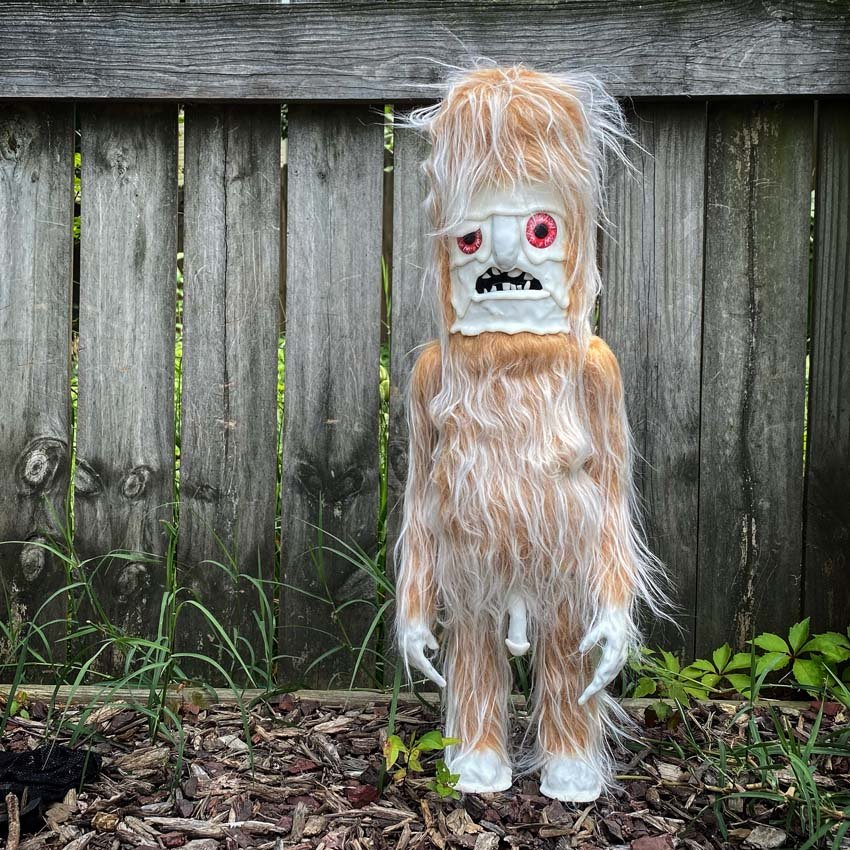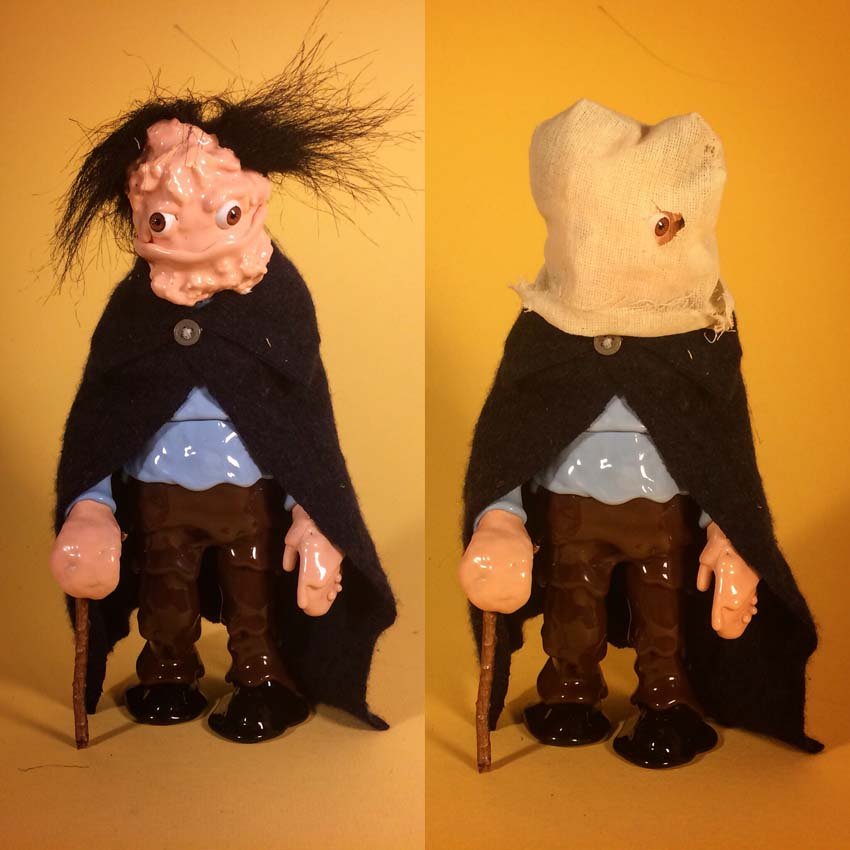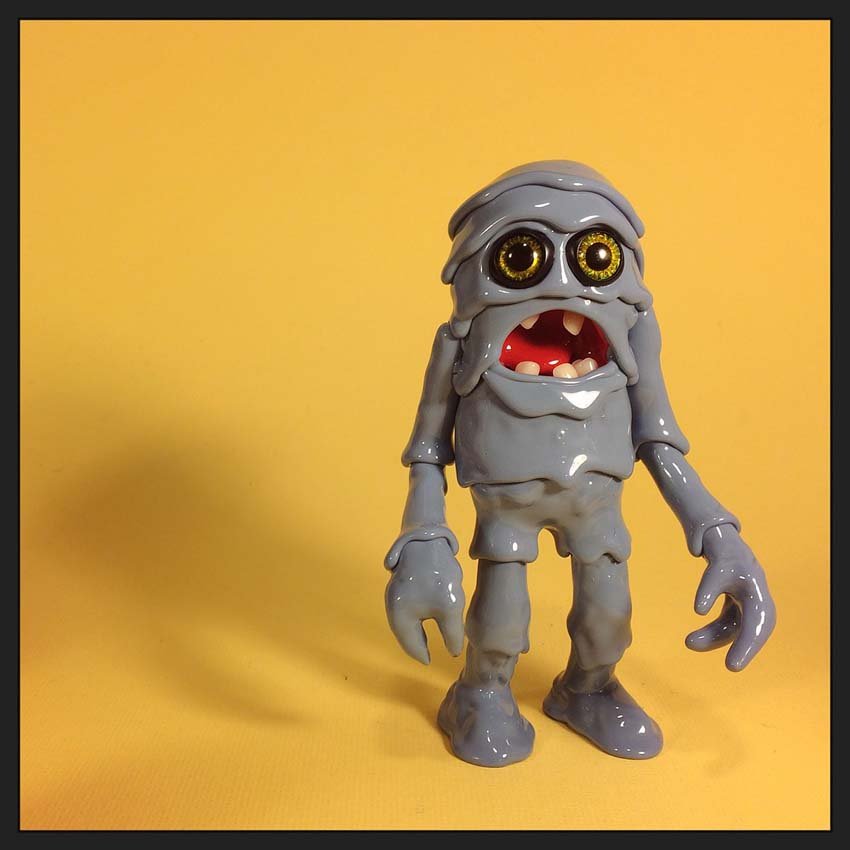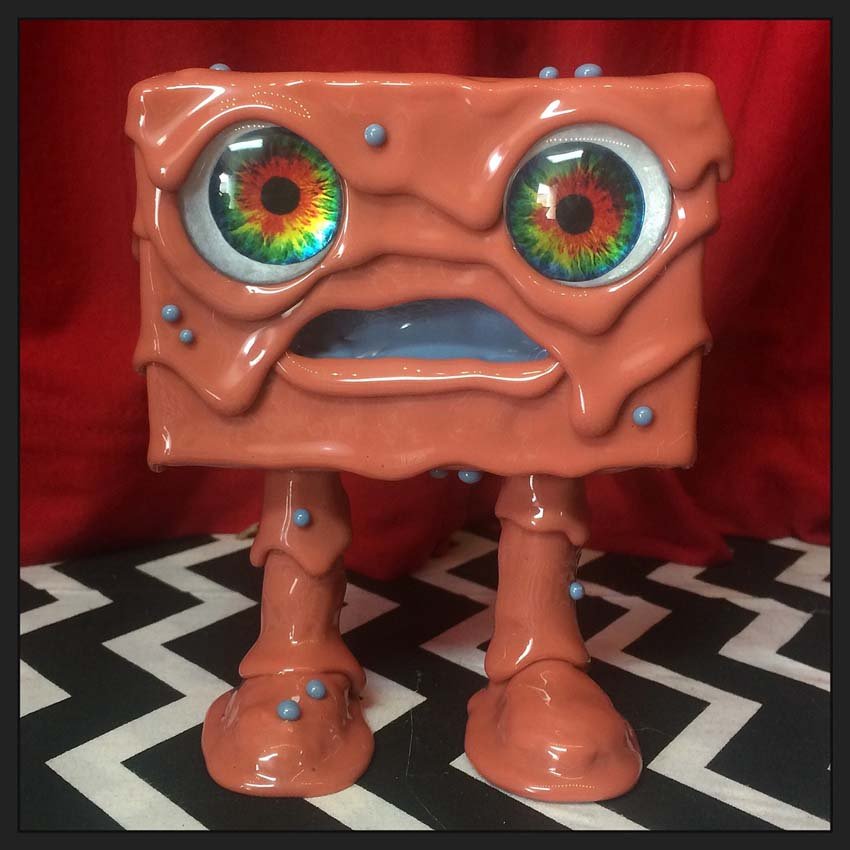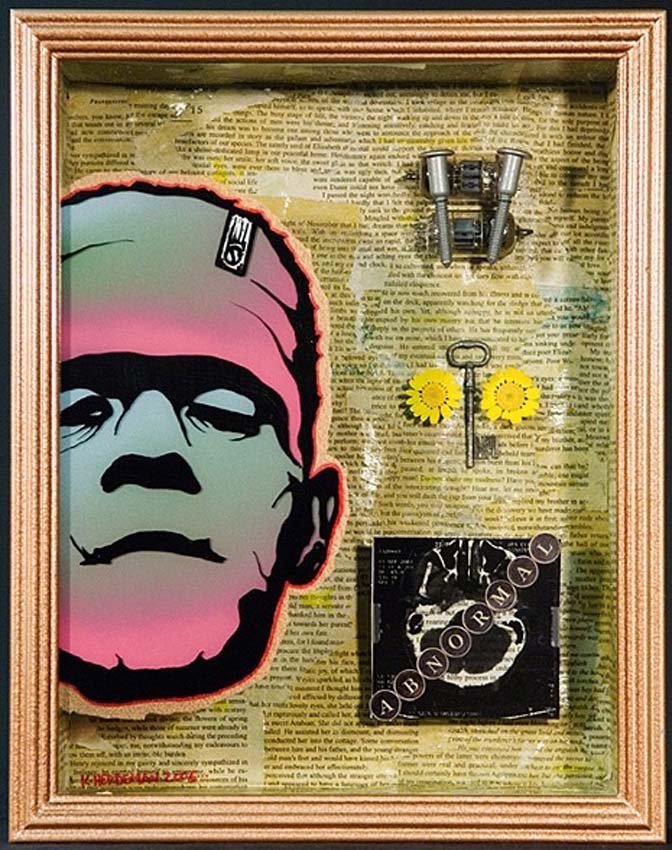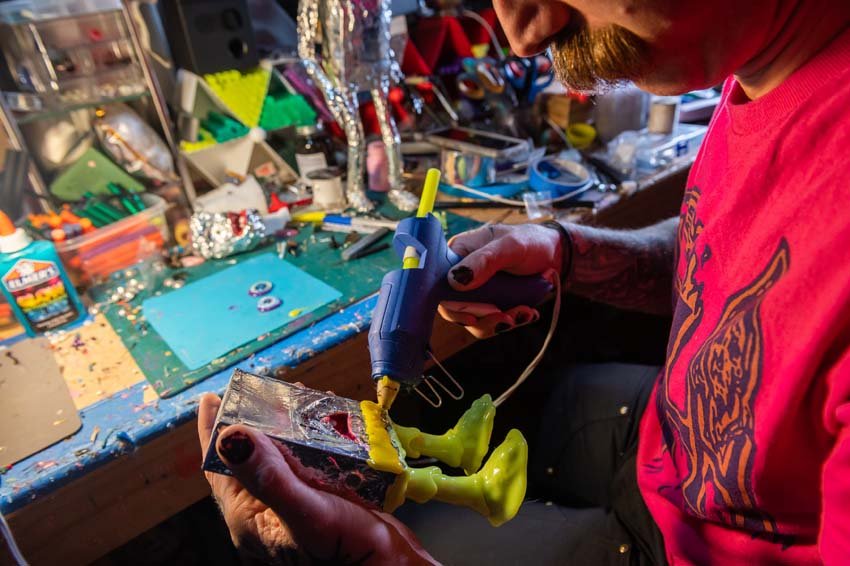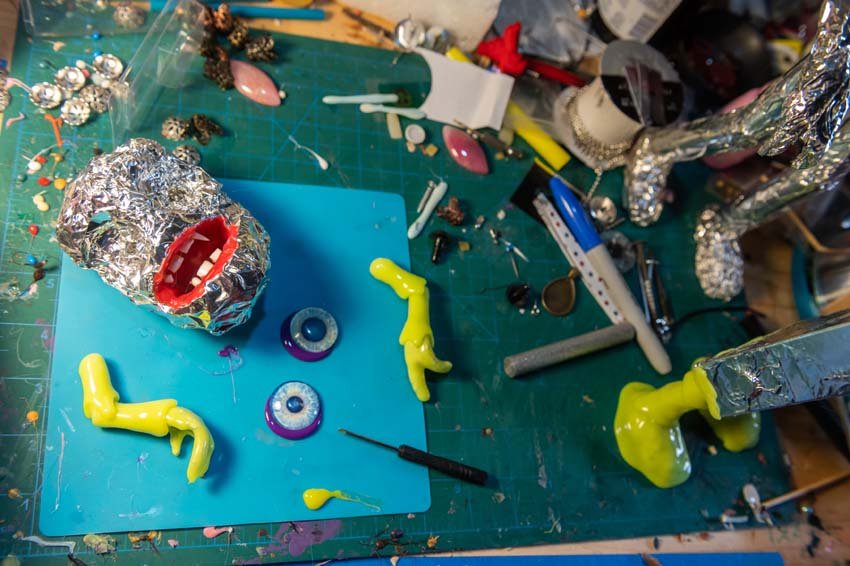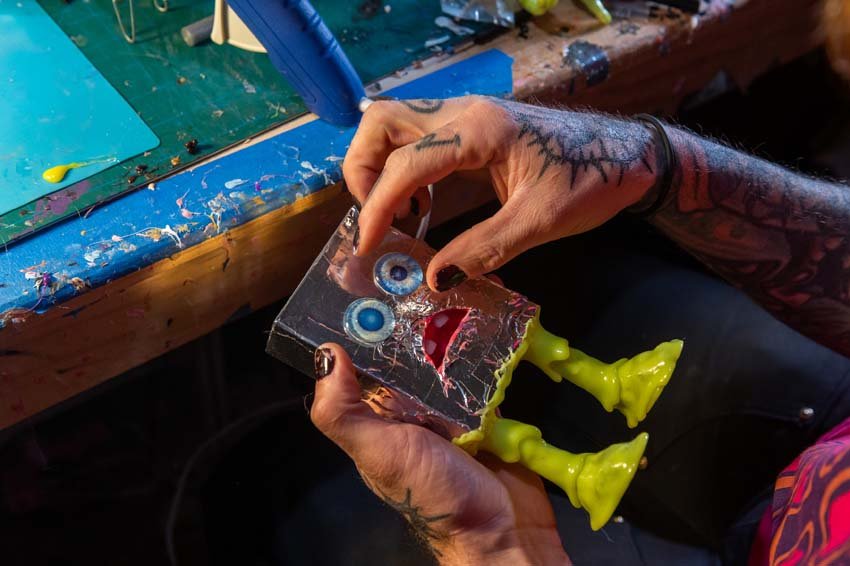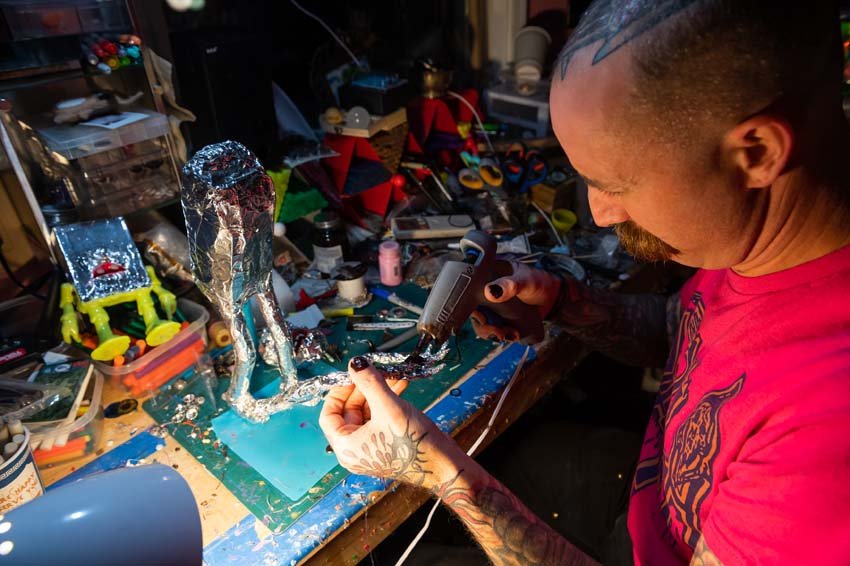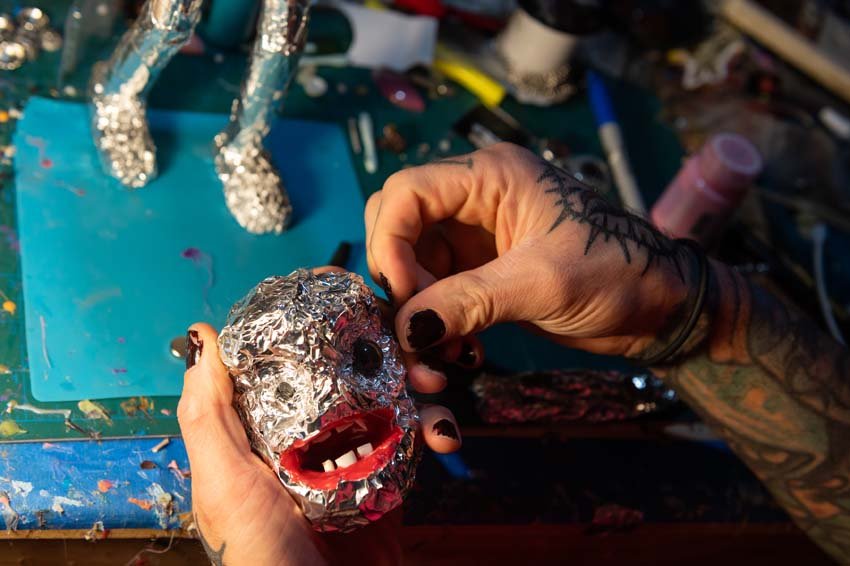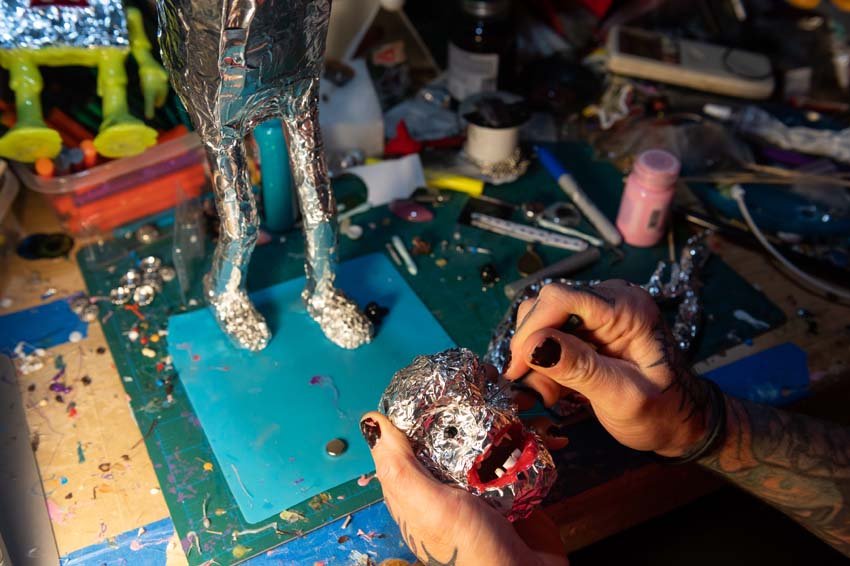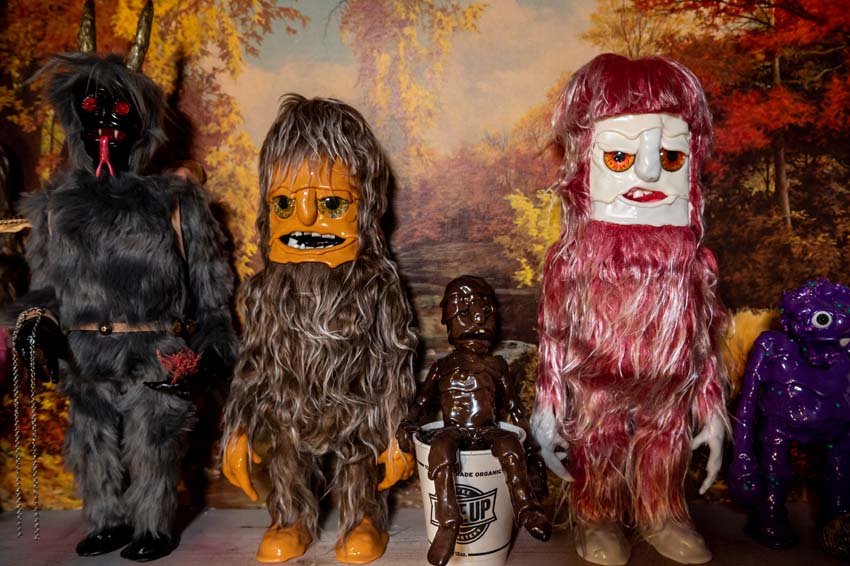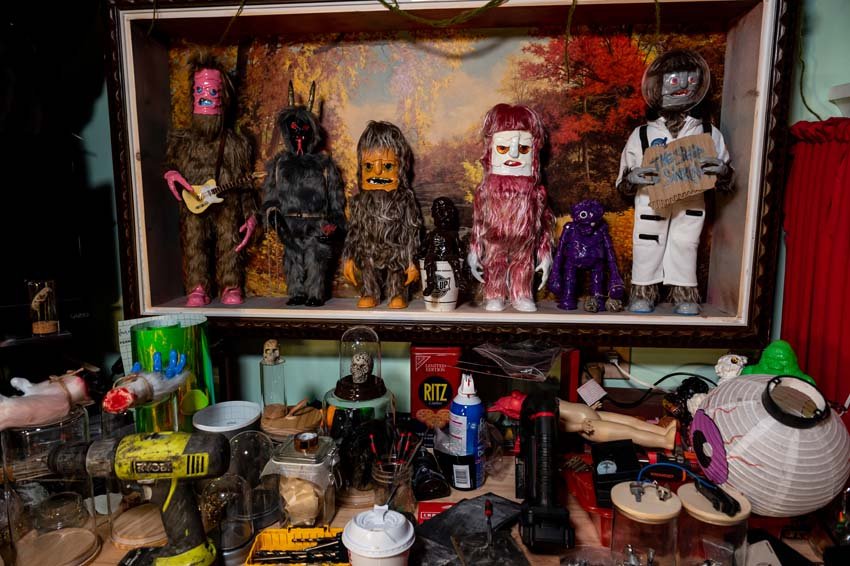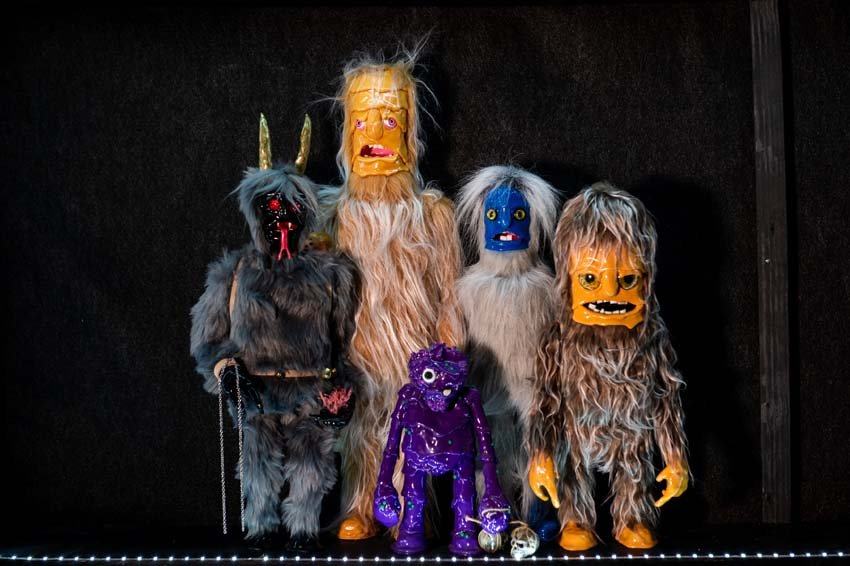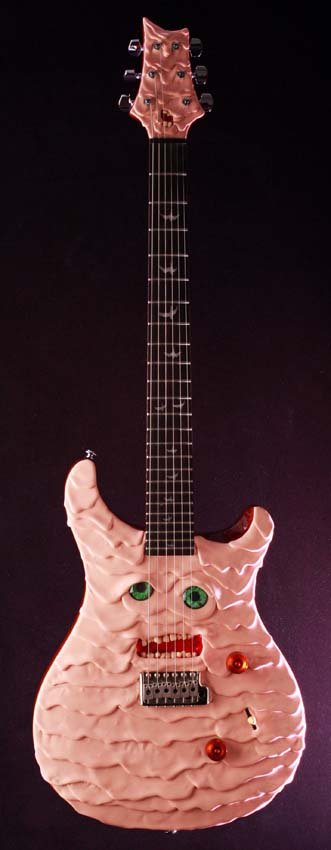+ By Dylan Roche + Photos by Alison Harbaugh
Kevin Herdeman possesses what he describes as “an unhealthy need to create.” He’s a conceptualist who works as much in music as he does in paint and sculpture. Regardless of his chosen medium, his work is driven by a fervent need to keep himself busy, make discoveries through trial and error, and bring outlandish visions into reality.
Herdeman’s Melt Monsters were developed from this sustained energy. One of his signature series of art, the Melt Monsters are part toy and part sculpture. Standing a foot or two in height, the figures boast bright colors and expressive faces and have attracted eager collectors. “I just got lucky,” says Herdeman, recalling how Melt Monsters exploded in popularity on Instagram when he first started making them. “The right people saw it and would post or repost, and it just got a big following. I got to a point where I couldn’t make enough.”
An experimentalist, Herdeman first began expressing himself creatively in childhood. These days, he draws inspiration from horror and sci-fi movies, playing on what is atypical and extraordinary.
A little more than 20 years ago, he focused on mixed-media paintings on glass. He would often paint an outline on the top side of the glass with enamel, then he’d paint the rest of the piece on the reverse side. At one point, he began masking off parts and using mostly spray paint before moving on to to other materials such as paper. “I used lots of Elmer’s glue,” he says. This way, the artwork would have texture, even though it was on a supersmooth surface.
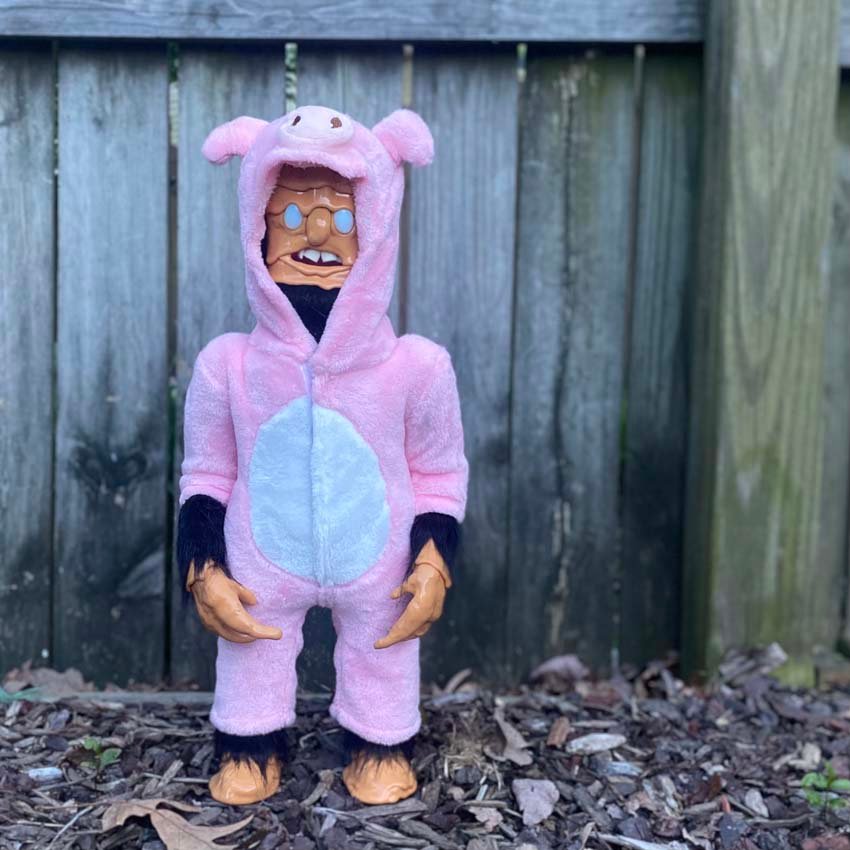
Using other materials began as a necessity because there were limited spaces in which he could work with odorous spray paints, but over time, it expanded his skills. “It was actually a good thing, as it turned the paintings into so much more, in my opinion,” he says.
Between 2006 and 2008, he made and vended shirts at horror conventions because he never saw what he wanted to see there. With the help of a friend who knew Adobe® Photoshop® software, he designed T-shirts and had them screen-printed, creating a line he named MonsterArm. The line came to halt when the work became “stale,” as Herdeman describes it. “Plus, the tattoo apprenticeship started taking up all my time,” he explains. (That apprenticeship ended when Herdeman realized he liked getting tattoos more than he liked giving them.)
Having placed his focus back on the work that brought him joy, Herdeman began showing and selling his work at art shows, primarily ones held in coffee shops, tattoo parlors, bars, and restaurants. His first was a group show was at The Ottobar in Baltimore, followed by a handful of solo shows and then more group showings.
Some of his favorite shows were at Tsunami in downtown Annapolis. He was one of the first artists to exhibit his work at the restaurant, which now regularly shows art. “I was there a lot, and Scott [Herbst] thought we should try out a show,” Herdeman says. “The first one was nuts. . . . It was wild. It was completely packed, like almost overwhelmingly packed. I think I sold 30 or 40 pieces that night.”
As he got more serious about creating and selling art—and started to realize the potential for making a living as an artist—he built a studio in the backyard of his Millersville home. The space, littered with tools and supplies, also serves as a gallery for his art collections and creations. Previously, he made the Melt Monsters at his kitchen table, and then, when he bought his house, he made them in a utility room next to the washer and dryer. When his father-in-law noticed the financial potential of the Melts, he helped Herdeman put up a 12-by-24-foot climate-controlled space. “I owe that space to my father-in-law, and I’ll never thank him enough,” he says.
Once he had an art space, Herdeman vowed to make one Melt Monster per day for a year. He made good on that New Year’s resolution, sometimes making small runs of a particular figure.
Herdeman describes the look for the Melt Monsters as coming from several pop cultural inspirations—aliens, cryptids, and cartoon characters. Each one starts with an armature that Herdeman assembles from anything he finds around the house, mostly foil and CPVC plastic, sometimes even trash such as cardboard or old drink containers. He uses magnets to hold the limbs in place and give some articulation as he figures out the specific pose the monster will have.
Then, strategically, he melts the soft plastic from the bottom up. Herdeman begins with plastic on the armature’s feet so they can get a flat bottom that will let them stand solidly. Once the feet are dry, he melts plastic on the lower legs. He proceeds similarly with the next layers, all the way up until he reaches the head. The mouth is made, and the tiny teeth are set in place before the layers are applied. Layers are then applied around the mouth. The eyes are set in place while the layers are setting.
There’s a spontaneity to his creativity—if he wants to give a monster some hair with bangs, he’ll do that. If he thinks the monster should have a funny look on its face, he can make that happen. For Herdeman, it’s all about the end product. “That’s why I do it—because it’s funny. It’s fun,” he says. “And people have been receptive.”
It takes a few hours to complete one Melt Monster, but Herdeman’s process allows him to work on several simultaneously. He likes to “assembly line” the monsters; when he’s working on the feet on one, he can work on the hands of another, working in different colors of plastic and using various facial features to make sure each monster is unique.
Although the Melt Monsters are popular, they are only one part of Herdeman’s repertoire. He applies the same “melt style” to create belt buckles, pendants, brooches, jewelry, and stash jars with faces. He covers guitars and ukuleles to give the instruments personality.
Creating a name for himself has brought Herdeman commissions. “As long as it fits my style of art, I’ll make it for you,” he says. “If someone wants an oil painting, I’m not gonna do it, because that’s not what I do.” When taking commissions, he would rather finish the piece before getting paid, which is not the industry standard. “I don’t like taking money up front, because then I feel forced. And people aren’t as pushy that way,” he says.
When he’s not in the art studio, Herdeman works as a pipe fitter. “I’m as blue collar as they come,” he quips. A few years ago, during a period of unemployment, he made art his full-time job. “I f***ing hated it,” he said. “I mean, it was kind of cool. I’d wake up and I’d literally just drink coffee and paint all day. Luckily, I had a ton of commissions,” he says. “But it just got to the point where I was running out of ideas or starting to try and think of what people might want and worrying about if stuff would sell. There came a time where I was thinking, ‘Well, oil is expensive, and maybe we’re just going to have to be cold this winter.’”
Herdeman says that all of his works share one quality—people either love or hate them. “They’re not necessarily for everyone,” he says. “I always try to make my art as attainable as possible. There’s a lot of art that I see, and, I mean, I might not want it, but that doesn’t mean that it isn’t awesome to someone else.” He acknowledges that some artistic choices haven’t worked well. “Certain ideas like, say, the stash jars, I thought would go over well and sell like crazy, but that’s not always the case,” he says.
Still, Herdeman’s art continues to attract the attention of collectors, sometimes in unexpected ways. He once received an email from a woman who looked him up online after finding and buying one of his paintings at a Goodwill store, where it had been donated from another art collector’s liquidation. Herdeman sought out that Goodwill store to buy back his other donated pieces so he could resell them through his own online store. “There’s nothing wrong with making money twice off the same artwork,” he says.
Herdeman posts his many mixed-media sculptures and paintings, along with glimpses of his daily life, on Instagram. He also makes, records, and releases music as Ancient Radiations. He’s mostly an instrumentalist, playing all of the parts himself and occasionally featuring a guest vocalist. He also plays in an internet-based band with his San Francisco–based friend Sam Shuler, who plays under the name Ugly Human. Herdeman plays drums, noise, and samples. Locally, he plays guitar with longtime friends in a noise rock band named HUVR and plays bass in a Baltimore-based punk rock band called Murder.
Anyone who follows Herdeman should expect to see new things as he continues his artistic endeavors. He hints that he might pursue woodworking at some point. “Sometimes I get bored with what I’m making. Plus, I’d rather not be pigeonholed into one particular scene,” he says. “I’m not making stuff for other people. I’m just making it because I want to make it. The world keeps on spinning, man.” █
For more information, visit kevinherdeman.com or follow
@staticfromspace on Instagram.
